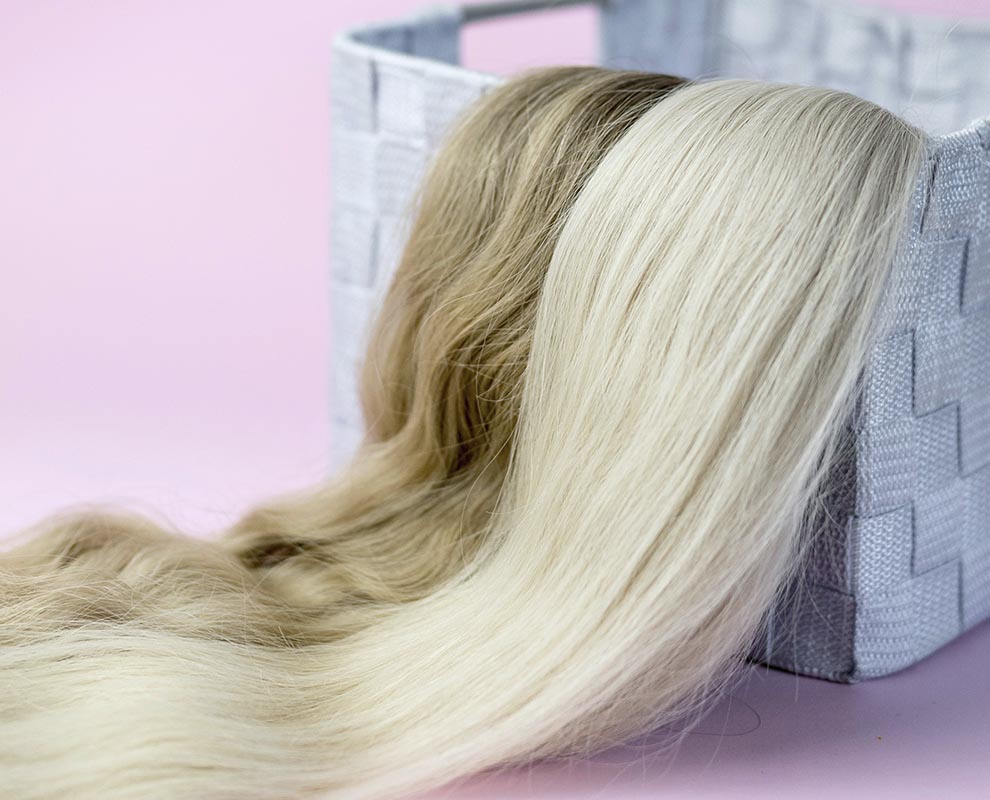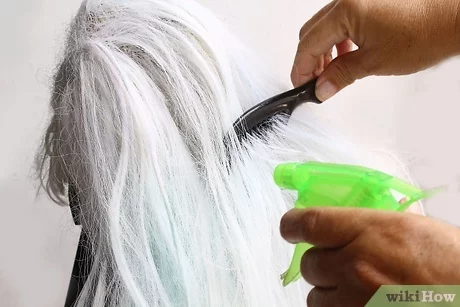Contents
hide
Introduction
Untangling synthetic hair can be a delicate process to prevent damage to the fibers and maintain the overall quality of the hairpiece. Here is a detailed guide on how to effectively untangle synthetic hair: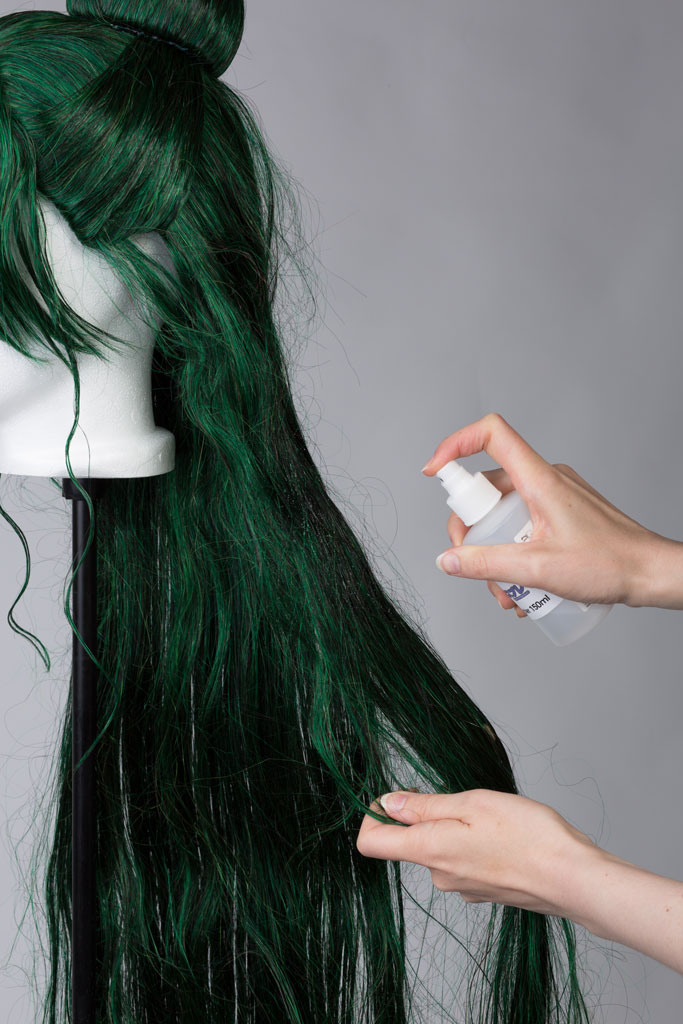
Prepare the Hair:
- Find a well-lit and spacious area to work on untangling the synthetic hair. Make sure you have enough time to dedicate to the task without rushing.
- Have a wide-toothed comb, detangling spray or conditioner, and a towel or cloth on hand to aid in the process.
Separate the Hair:
- Divide the tangled synthetic hair into small sections to make the untangling process more manageable. Work on one section at a time to avoid creating more knots.
Apply Detangling Spray or Conditioner:
- Lightly mist the tangled section of synthetic hair with a detangling spray or apply a small amount of conditioner to help soften the knots and make them easier to unravel.
- Allow the spray or conditioner to sit on the hair for a few minutes to help loosen the tangles.
Start from the Bottom:
- Begin detangling the synthetic hair from the bottom or ends using a wide-toothed comb. Hold the hair firmly near the roots to prevent pulling on the scalp or causing discomfort.
- Gently work your way up towards the tangled area, using slow and steady motions to unravel the knots without causing breakage.
Use Fingers to Separate Tangles:
- For stubborn knots or larger tangles, use your fingers to gently separate the strands before combing through them with the wide-toothed comb.
- Avoid pulling or yanking on the hair, as this can lead to damage or breakage of the synthetic fibers.
Patience is Key:
- Take your time when untangling synthetic hair, especially if the knots are tight or numerous. Patience is crucial to avoid causing unnecessary stress on the hairpiece.
Apply More Detangler as Needed:
- If the tangles are resistant to combing, apply additional detangling spray or conditioner to further soften the knots and make them easier to unravel.
- Work the product through the tangled section and allow it to sit for a few more minutes before continuing with the comb.
Work in Sections:
- Continue working through the synthetic hair in small sections, untangling one knot at a time. Be gentle and methodical in your approach to prevent further tangling or damage.
Avoid Forceful Pulling:
- Do not forcefully pull or tug on the synthetic hair to remove knots, as this can cause breakage or damage to the fibers. Take your time and be gentle in your handling of the hair.
Finish with a Final Comb-Through:
- Once you have successfully untangled all sections of the synthetic hair, gently comb through the entire length of the hairpiece with a wide-toothed comb to ensure that all knots have been removed.
- Check for any remaining tangles or knots and address them promptly to prevent them from worsening over time.
Style as Desired:
- After untangling the synthetic hair, you can style it as desired using gentle techniques such as finger combing, braiding, or using hair accessories.
- Avoid excessive heat styling or harsh treatments immediately after untangling to prevent re-tangling or damage to the hair fibers.
Regular Maintenance:
- To prevent future tangles, regularly comb through the synthetic hair with a wide-toothed comb to remove any knots or snarls that may have formed during wear.
- Store the synthetic hair properly when not in use to prevent tangling and keep it in top condition for future wear.
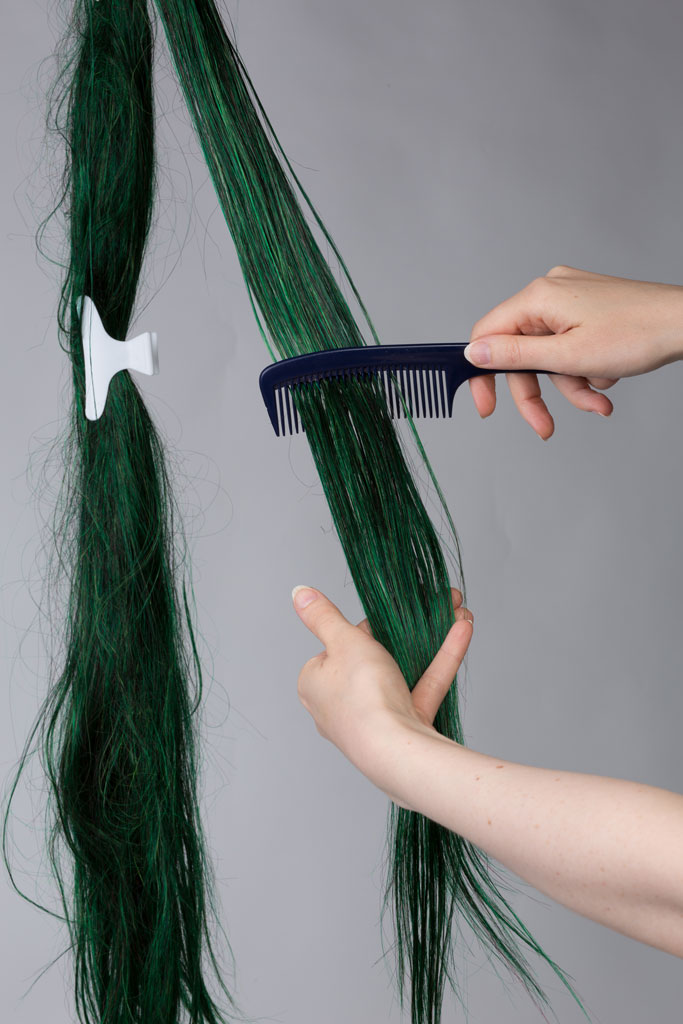
Use a Detangling Brush:
- In addition to a wide-toothed comb, you can also use a detangling brush specifically designed for synthetic hair. These brushes have flexible bristles that gently glide through the hair, helping to untangle knots without causing breakage.
Apply Heat for Stubborn Tangles:
- For particularly stubborn tangles, you can use a hairdryer on a low heat setting to gently warm the tangled area. The heat can help soften the fibers and make it easier to unravel the knots. Be cautious not to apply too much heat to avoid damaging the synthetic hair.
Work in Small Sections:
- If the entire hairpiece is tangled, separate it into smaller, more manageable sections. Focus on one section at a time, gradually working through each knot before moving on to the next section.
Use a Silk or Satin Scarf:
- To prevent further tangling while sleeping or storing the synthetic hair, wrap it in a silk or satin scarf or bonnet. These materials are gentle on the hair and help reduce friction, minimizing the risk of new tangles forming.
Avoid Overwashing:
- Excessive washing can lead to tangling and matting of synthetic hair. To maintain the integrity of the fibers, avoid washing the hairpiece too frequently unless necessary. Opt for dry shampoo or spot cleaning methods to refresh the hair between washes.
Avoid Rough Handling:
- Handle synthetic hair with care to prevent unnecessary tangling. Avoid rough brushing, vigorous shaking, or twisting motions that can create knots and snarls in the hair fibers.
Trim Split Ends:
- If you notice split ends or fraying strands in the synthetic hair, trim them with sharp scissors to prevent the damage from spreading and causing further tangling. Regular trims can help maintain the health and appearance of the hairpiece

Consult a Professional:
- If you’re struggling to untangle synthetic hair or encounter severe matting that you’re unable to resolve, consider seeking assistance from a professional hairstylist or wig specialist. They can provide expert advice and solutions for untangling and restoring the hairpiece.
Protective Styles:
- Consider styling the synthetic hair in protective styles such as braids or twists to minimize tangling and reduce the risk of knots forming. Protective styles can also help preserve the integrity of the hair fibers and extend the lifespan of the hairpiece.
Invest in Quality Products:
- Use high-quality detangling sprays, conditioners, and styling products specifically formulated for synthetic hair. Investing in quality products can help make the untangling process easier and keep the hair looking its best.
Regular Maintenance Routine:
- Establish a regular maintenance routine for your synthetic hair, including gentle combing, detangling, and storage practices. Consistent care and attention will help prevent tangles and keep the hairpiece in optimal condition.
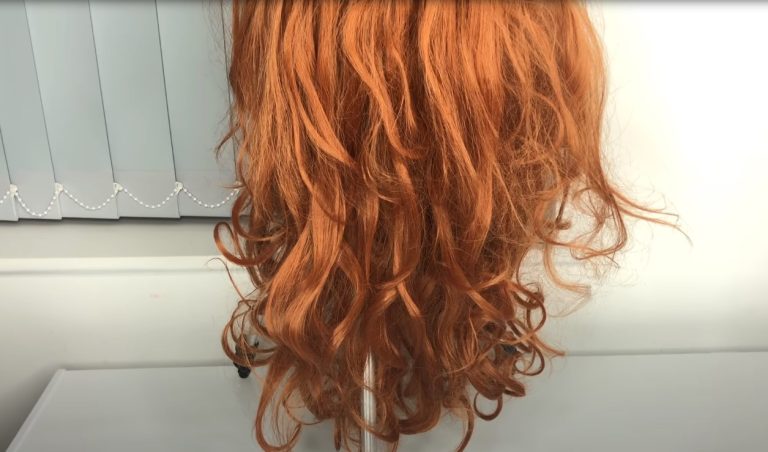
Conclusion
By incorporating these additional tips and techniques into your approach to untangling synthetic hair, you can effectively manage knots and tangles while maintaining the overall quality and appearance of the hairpiece. With patience, gentle handling, and proper care, you can enjoy beautifully untangled synthetic hair that looks and feels great.